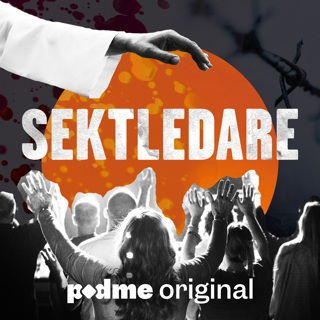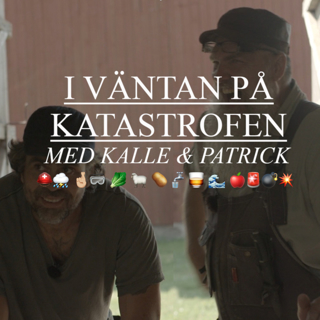
Ep. 77 Endovascular AV Fistula Creation with Dr. Neghae Mawla
In this episode, Dr. Neghae Mawla joins Dr. Chris Beck to discuss endovascular AV fistula creation. The episode begins by discussing the advantages of fistulas versus catheters and grafts and how guidelines have changed from “Fistula First” to the most appropriate type of access for the patient. Dr. Mawla explains the details of how he determines candidates for the EndoAVF using ultrasound for vein mapping. We then review patient preparation for EndoAVF including anticoagulation, antibiotics, and anesthesia. We share the two main systems for EndoAVF, Avenu Ellipsys and the WavelinQ device and discuss the similarities and differences between these two approaches for fistula creation. Dr. Mawla walks through his ultrasound-guided techniques and the need for dual venous and arterial access with the WavelinQ device. They review some potential complications with using these devices, including hematomas and uncontrolled arterial bleeds, and post-procedural management. Dr. Mawla discusses timelines for evaluating venous maturation in patients and when a fistula is typically ready for use. He explains the differences between EndoAVF and surgically created fistulas, including several advantages of endo-anastomosis. The episode ends by talking about EndoAVF education in dialysis centers and collaborating with nursing staff, clinics, and both device companies to re-educate staff and patients on differences in cannulation.
17 Aug 202059min

Ep. 76 Targeting the Tumor Microenvironment in HCC with Dr. Terence Gade
Interventional Radiologist Terence Gade from Penn Medicine, University of Pennsylvania Health System tells us about emerging research and therapies targeting the tumor microenvironment in Hepatocellular carcinoma (HCC).
10 Aug 202027min

Ep. 75 The Role of IR in Stroke Interventions (Part 2) with Dr. David Sacks and Dr. Martin Radvany
Reflect on how this Podcast applies to your day-to-day and earn AMA PRA Category 1 CMEs here: https://earnc.me/07FYzi Part II of the discussion with Dr. Martin Radvany and Dr. David Sacks on the role of Interventional Radiologists in stroke interventions, including addressing training requirements and rural access to care.
4 Aug 202046min

Ep. 74 The Role of IR in Stroke Interventions (Part 1) with Dr. David Sacks and Dr. Martin Radvany
Reflect on how this Podcast applies to your day-to-day and earn AMA PRA Category 1 CMEs here: https://earnc.me/yS6TGL Dr. Martin Radvany and Dr. David Sacks discuss the role of Interventional Radiologists in the treatment of acute ischemic stroke, including training requirements, the multidisciplinary team approach, and ways to improve patient access to high quality care.
2 Aug 202057min

Ep. 73 Iliocaval Stenting with Dr. Gerry O'Sullivan
Reflect on how this Podcast applies to your day-to-day and earn AMA PRA Category 1 CMEs here: https://earnc.me/TFABaN Interventional Radiologist Dr. Gerry O'Sullivan shares his experiences with Iliocaval stenting in post-thrombotic patients, including pearls and pitfalls and the "Aiming for the bottom corner" technique.
27 Juli 202048min

Ep. 72 Uterine Fibroid Embolizations in the OBL with Dr. John Lipman
John Lipman, MD discusses UFE practice building, patient workup, and embolization technique in his dedicated Women's interventional practice, Atlanta Interventional Institute. --- CHECK OUT OUR SPONSORS RADPAD® Radiation Protection https://www.radpad.com/ Accountable Physician Advisors http://www.accountablephysicianadvisors.com/ Accountable Revenue Cycle Solutions https://www.accountablerevcycle.com/ --- EARN CME Reflect on how this Podcast applies to your day-to-day and earn AMA PRA Category 1 CMEs: https://earnc.me/10vK6b
20 Juli 202052min

Ep. 71 Building a MedEd platform with Dr. Sarel Gaur
We talk with Interventional Radiologist Sarel Gaur about what inspired his #medEd #YouTube channel, where his topics come from, and tips for success for others.
13 Juli 202028min

Ep. 70 CO2 Angiography with Dr. James Caridi
Reflect on how this Podcast applies to your day-to-day and earn AMA PRA Category 1 CMEs here: https://earnc.me/F6p0sz In this episode, Dr. James Caridi joins Dr. Christopher Beck to discuss the benefits of using CO2 for an angiography as well as some important tips for proper use. Dr. Caridi mentions some of the reasons for choosing CO2 rather than contrast, including its solubility, low viscosity, and buoyancy. He also speaks about CO2 angiography approaches for imaging difficult to access vasculature. Dr. Caridi also speaks to specific uses of CO2 angiography for use for mesenteric angiography and how CO2 angiography can improve the sensitivity for detection and localization of GI bleeds. Dr. Caridi and Dr. Beck also discuss some non-vascular uses for CO2 angiography as well as a technique for imaging with CO2 without having to give up wire access. We talk through safely preparing a delivery system and gently injecting CO2 to prevent/reduce reflux in the patient if needed. Finally, we go into some notes concerning dialysis, contrast induced nephropathy, and some instances when CO2 angiography should not be used. Resources mentioned: CO2 Angiography Society http://www.co2angio.org/index.php This website features over 100 pieces of literature related to CO2 angiography, information about the newest developments, and access to membership in the society. Dr. Jim Caridi explains CO2mmander and AngiAssist https://www.youtube.com/watch?v=MjsnHWmRZQI This video explains the portable delivery system and the gas management system.
6 Juli 202051min





















